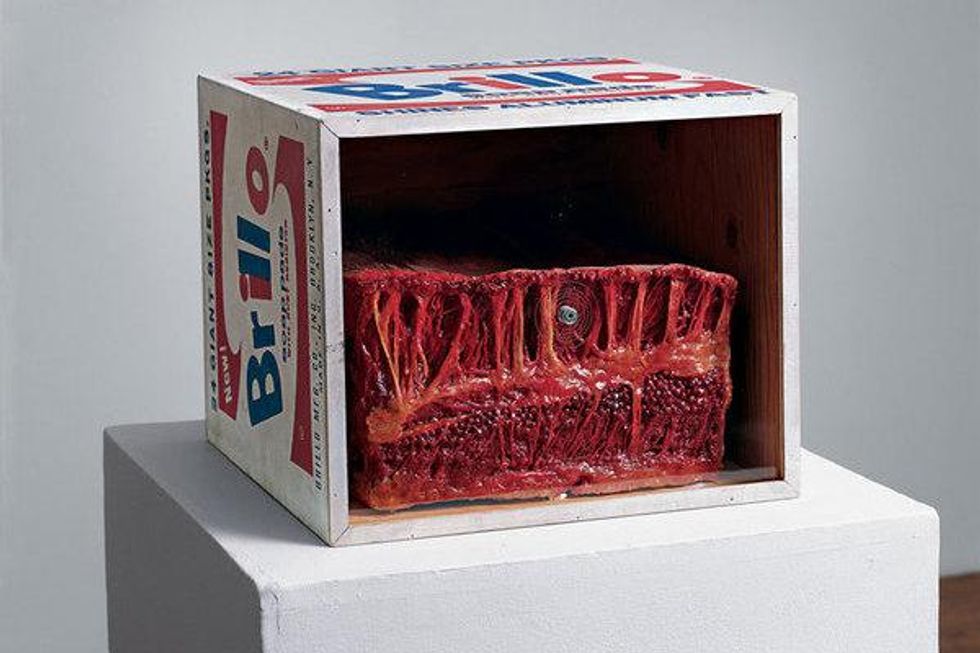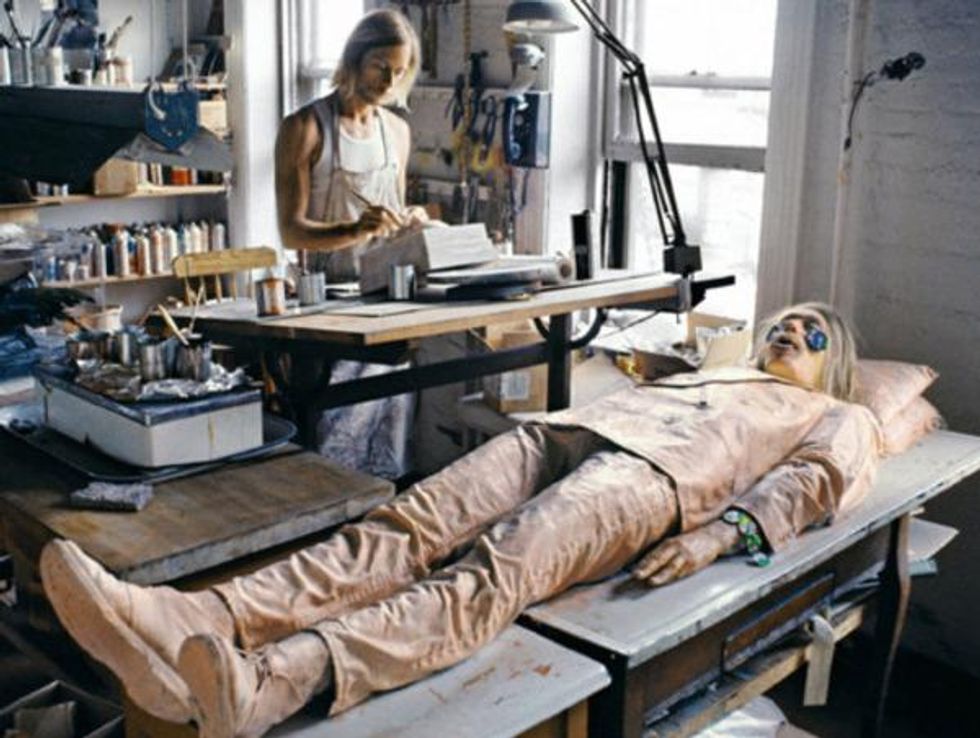Travel & Nightlife
Paul Thek Is Having Such A Moment

This summer's international art star is the late Paul Thek.
May 07 2013 4:27 PM EST
February 10 2019 9:03 PM EST
By continuing to use our site, you agree to our Private Policy and Terms of Use.

This summer's international art star is the late Paul Thek.
Twenty-five years after his death, Paul Thek has arrived, again. An art star for three decades, from the late 1950s to 1988, when he died of AIDS-related causes, Thek came of age with Peter Hujar, Susan Sontag, Andy Warhol, and Eve Hesse, and produced paintings, photographs and sculptures that remain rightfully celebrated in the gay art canon.
New York's Leslie-Lohman Museum of Gay and Lesbian Art recently opened a show called "Paul Thek and His Circle," a rosy and romantic look at Thek's coming-of-age. Things are a little different over in Cologne, Germany, where KOLUMBA, an art gallery run by the Archdiocese of Cologne,is currently staging "Art is Liturgy," a presentation of Thek's mortality and morality-minded pieces.
As the gallery explains, Thek once told Swiss art historian and curator Harald Szeemann, "Art is Liturgy, and if the public responds to their sacred character, then I hope I realized my aim, at least at that instance." To Thek, a Brooklyn-born boy raised Catholic, art had to have a religious aspect, usually one that revolved around martyrdom or decay. He was doing meat art long before Lady Gaga: his mid-60s series Technological Reliquaries featured meat in Warhol boxes, stuck to plaster or under plexiglass, enshrined.

"I was amused at the idea of meat under Plexiglas because I thought it made fun of the scene--where the name of the game seemed to be 'how cool you can be' and 'how refined,'" he said. "Nobody ever mentioned anything that seemed real. The world was falling apart, anyone could see it." He stopped making meat pieces in the late-1960s for fear that a moniker he overheard, "the meat man," might stick.
Next Thek, moved onto his tomb series, in which he cast a wax representation of himself, a proponent of LSD and flower power, in the role of the decomposing hippie. It was, the bisexual said in a 1969 interview, a commentary on what he saw as a society on the verge of disintegration, and an art scene devoid of emotional resonance. "In New York at that time there was such an enormous tendency toward the minimal, the non-emotional, the anti-emotional even, that I wanted to say something again about emotion, about the ugly side of things. I wanted to return the raw human fleshy characteristics to the art."

It was in that mind frame that Thek began his work for documenta V, the fifth in a series of German art exhibits organized by Szeemann. The theme that year, 1972, the year he made the liturgy remark, was "Questioning Reality - Pictorial Worlds Today," and Thek decided to work with Szeeman's concept of "individual mythologies" by repurposing his effigy for a work called "Ark, Pyramid," a pink pyramid that was damaged by a fire in 1981, a perfect statement on Thek's view of art as a product. And it's art's ephemeral, combustible nature that fascinated Thek the most, and it's this nature, built into Thek's work, that presented KOLUMBA with a challenge by and of design. "The curatorial challenge lies in dealing with a work that itself was meant to remain unfinished, its inherent claim for contextual renewal, and beyond this, its only having come down to us in fragments. It makes us aware of the performance quality of works of art, since without staging them, there is no way to show them in public."
The KOLUMBA show, which coincides with the gallery's publication of Paul Thek, Shrine, runs in Cologne, Germany through August 15. If you can't make it, don't worry, because there's plenty of Thek action elsewhere. The gallery recently published Paul Thek, Shrine, paul thek the shrine, the publisher JRP|Ringier printed Paul Thek in Process, the work he hoped to publish during documenta 5, and The Leslie-Lohman show in New York will be up through July 7, 2013, and comes complete with a wonderful online sampler. There's also plenty of online documentation from Harald Szeemann and Thek's collaboration, fans have created a plethora of sites dedicated to Thek and Hamburg's Museum of Contemporary Art has a very detailed chronology of Thek's life four you to dig through like an archeologist looking for a mummified hippie.
Want more breaking equality news & trending entertainment stories?
Check out our NEW 24/7 streaming service: the Advocate Channel!
Download the Advocate Channel App for your mobile phone and your favorite streaming device!